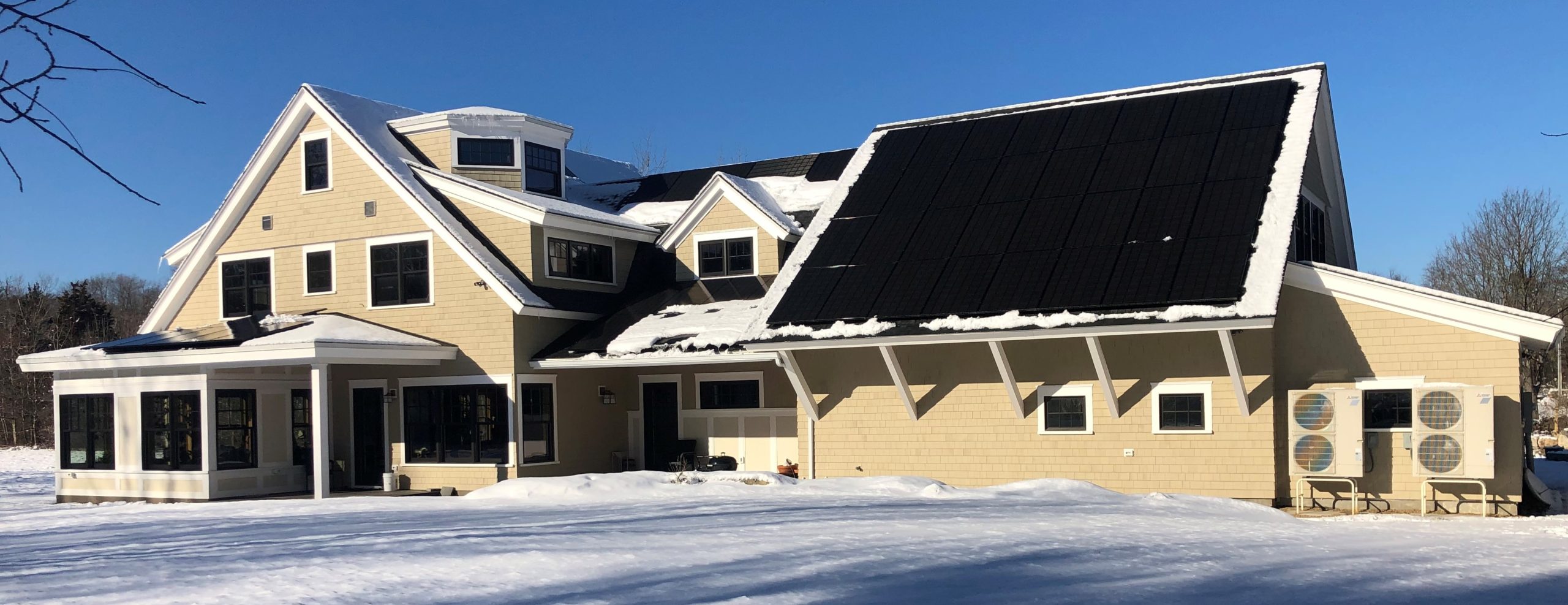Fireplaces don’t work well in net zero houses

I built a large traditional open-hearth fireplace in THE HAYFIELD HOUSE. Unfortunately, it didn’t work! Following is my story of how I ‘fixed’ the problem.
I built a house in 1990 with a large traditional open-hearth fireplace. That fireplace worked great, so I used that design to build a similar (but bigger) fireplace in THE HAYFIELD HOUSE. Unfortunately, my new fireplace didn’t work very well. Smoke tended to back-draft into the living area instead of rising up the chimney. What was worse is that if any exhaust fans were simultaneously working (kitchen fan, etc.), the entire house would fill with smoke. And of course, my smoke alarms were constantly being triggered. In short, the chimney wasn’t drawing well. –What I had failed to understand was that my new net-zero house was much ‘tighter’ than my leaky 1990 house. With less outside air leaking into the house, the harder it is for the chimney to draft properly.
Initially, I thought the issue was due to an operating incompatibility between my Zehnder whole house energy recovery system and the fireplace. If the Zehnder was causing any depressurization of the air inside my house (vs the outside ambient air pressure) then the smoke would be drawn into the house. I tried turning off the Zehnder. That didn’t help. I then looked at the Zehnder manual which directed me to an electronic toggle that informed the Zehnder that the house had a fireplace and not to create negative internal air pressure. That didn’t work either.
I next blamed my mason for installing ‘only’ a 4-inch diameter make-up air pipe. That pipe draws outside air directly into the fireplace. Obviously that pipe should have been much larger. But how much larger? To gauge this, I opened a window while I had a fire lit. The result was a near gale force wind coming through the open window! Obviously, (to work properly) my fireplace needed a huge amount of make-up air. How would I install a larger make-up air pipe? My fireplace sits on a concrete slab. Trying to run another make-up air pipe either under, through or above the slab seemed like a daunting and expensive task. — So I then researched Plan B.
Upon searching the internet (see www.woodheat.org), I found that “An open fireplace consumes between 200 and 600 cubic feet per minute (CFM) of room air — more if it is a big fireplace with a big, big fire. Tightly built houses cannot tolerate 200 cfm exhaust flow without getting meaningfully depressurized”. However, Woodheat.org also states that “Wood stoves with gasketed doors consume in the range of 10-25 cubic feet per minute of air”. — So Plan B seemed to be to use the existing make-up air pipe directly connected to a wood stove (with tightly sealing gasket doors). That alternative meant that my existing 4-inch diameter make-up air pipe could easily supply the air needs of a wood stove. So I bought a wood stove! The result was:

However, the ‘tightly sealing gasket doors’ weren’t so tightly sealing due to a manufacturing defect. So the doors got replaced.
And, the make-up air pipe didn’t connect very well to the stove, so the vents and stove placement had to be adjusted.
So instead of a fireplace, I ended up with a woodstove, which WORKS!
PS: Even with direct make-up air systems, there are concerns with back-venting of exhaust gases, which can cause fire hazards and/or a carbon monoxide problem. I don’t fully understand how to fully prevent these issues. — One needs to install stoves and other combustion appliances in conformity to local codes, including installing required smoke and carbon monoxide detectors.
So the moral of this story is:
If your chimney ‘sucks wind’, reduce the need to suck!
.




[…] I also knew nothing about air-source hot water tanks that are used in many ZNE homes. That was OK,…